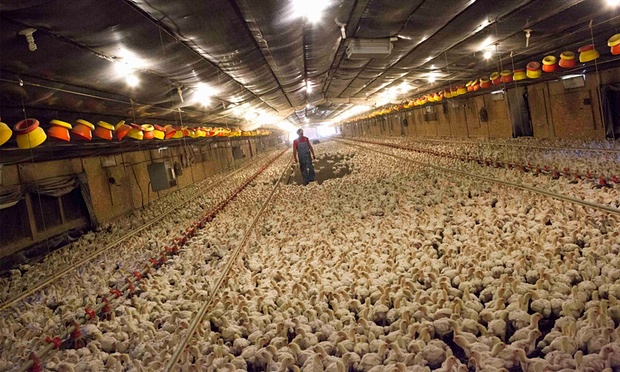
Will The Worst Bird Flu Outbreak in U.S. History Finally Make Us Reconsider Factory Farming Chicken?
The avian flu outbreak that has more than doubled egg prices across the country has also led to the death of more than 48 million birds in a dozen states, according to the US Department of Agriculture.
Iowa, the hardest hit, has euthanized more than 31 million birds, including approximately 40% of the state’s 60 million laying hens, according to Randy Olson, executive director of the Iowa Poultry Association.
July 14, 2015 | Source: The Guardian | by Laura Entis
The avian flu outbreak that has more than doubled egg prices across the country has also led to the death of more than 48 million birds in a dozen states, according to the US Department of Agriculture.
Iowa, the hardest hit, has euthanized more than 31 million birds, including approximately 40% of the state’s 60 million laying hens, according to Randy Olson, executive director of the Iowa Poultry Association. Turkey farmers in the state, while affected to a lesser degree, also have suffered. Minnesota, the leading turkey producer, has lost nearly 9 million turkeys.
The massive challenge of disposing of these sick birds illustrates the scale of chicken farming in the US. When avian flu infects a single bird on a chicken farm, the whole population has to be destroyed in order to stop the spread. In Iowa, for example, where an egg farm holds anywhere from 70,000 to 5 million birds, infection means slaughtering an unimaginable number of animals.
“It’s reasonable when we see these outbreaks to wonder if they are a manifestation of the unsustainability of the system,” says Suzanne McMillan, senior director of the farm and animal welfare campaign at the American Society for the Prevention of Cruelty to Animals (ASPCA). “Bird flu is a window into how today’s poultry flocks live day to day, in intensive confinement and unsanitary conditions. It’s an unnatural, unsustainable situation.”
When an infected bird is detected on a farm, it is immediately quarantined and the USDA works in conjunction with the farmer to determine the best method for disposing of the exposed flock. “It is important to realize that each [avian influenza] outbreak incident is unique and involves site specific conditions that need to be considered in making the best disposal decision for the situation at the site,” reads a 2006 paper by the Environmental Protection Agency.
The reality is often much more emotional than that language might imply. “These farmers spend their entire careers caring for their animals and to see the disease affect their flocks … is an emotionally devastating event,” Olson says.
For egg-producing chickens, the majority of which are housed in cages, euthanasia by carbon-dioxide gas is the only method approved by the USDA.
